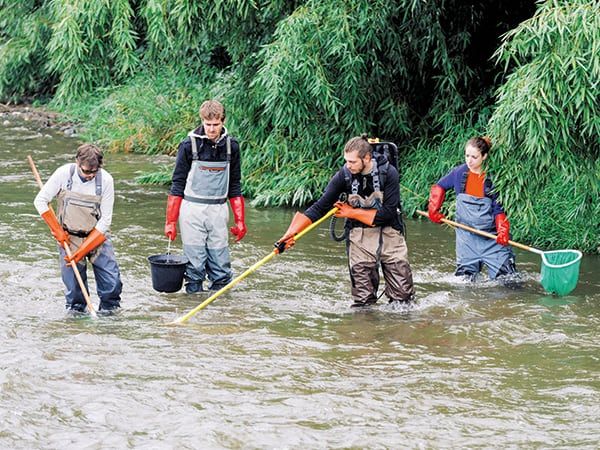LINKING
Research Projects
CCISS

Introduction
CCISS (Climate Change Impacts on wild SpecieS - pronounced "Kiss") has an overarching research theme to contribute to our understanding of the current and future impacts of climate change on wild species, including their societal impacts, and thereby contribute to forming scientifically-sound climate change policies.
More than two decades have passed since it became clear that anthropogenic warming was causing general trends for poleward/upward range shifts and phenological advancement of spring events. While these general trends receive continued support, a more sophisticated understanding of impacts has been challenging. Why do different sympatric species show different responses to the same climatic events and trends? How, in turn, are individualistic responses affecting species' interactions, and ultimately ecosystem functions?

Funding
CCISS is a grant from the French Make Our Planet Great Again (MOPGA) Program to Camille Parmesan

On 1 June 2017, in response to the United States’ decision to leave the Paris Agreement, the President of the French Republic, Emmanuel Macron, called on researchers and teachers, entrepreneurs, associations and NGOs, students and the civil society to mobilize and join France in the fight against global warming. In July, this call was followed by Germany, illustrating the desire of both France and Germany to be at the forefront of the fight against climate change.
This gave rise to the “Make Our Planet Great Again” international research initiative (funded by the Secrétariat Général Pour l’Investissement (SGPI) and the Bundesministerium für Bildung und Forschung (BMBF)), which is managed by the Centre National de la Recherche Scientifique (CNRS) and l’Agence Nationale de la Recherche (ANR) on behalf of all French research organizations, and by the Deutscher Akademischer Austauschdienst (DAAD) in Germany.

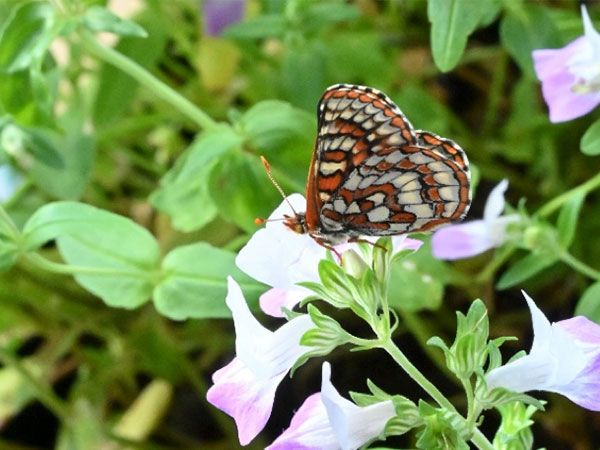
Objectives
The strength of the CCISS team is in linking impacts of climatic trends and extreme climate events on ecological, evolutionary and behavioural processes at the population level to patterns of biodiversity change at the global level. CCISS focuses on impacts of climate change on species' ranges and how sensitivities to climate change interacts with local adaptations and what that means for the potential and limitations of evolutionary adaptation to global warming.
CCISS moves this research into new areas, assessing (a) Impacts of societal importance: e.g. changes in human disease risk as a consequence of range shifts of disease organisms, their wild vectors and reservoirs; and (b) Impacts in high-risk habitats: assessing climate change risks for species inhabiting montane and boreal regions, that are under-studied but vulnerable systems.


Tackling impacts of global climate change at the population level, through working simultaneously in the field in wild populations combined with controlled experiments in a lab and greenhouse setting provides a flexible and robust platform for exploring uncertainty in future impacts, and incorporating that uncertainty into conservation planning for the coming century.
A third pillar of CCISS is exploration of creative outreach avenues. In a 2017 survey conducted across France, Germany, UK and Norway climate change was not perceived by the public in any country as one of the most important problems facing their country (EPCC 2017). Climate denial is currently on the rise among both the populace and policy-makers in the UK and USA. These statistics emphasize that outreach is as important as research in the field of climate change impacts. CCISS is developing multiple media platforms to translate climate change research findings into formats that are more accessible to the public and policy-makers, and provide positive and actionable messages.
Leader
Camille Parmesan is PI of this project, with a diverse team of researchers and artists. Principal researchers are Rob Lempert (RAND Corporation), Julio Postigo (Univ. of Indiana) and Michael C. Singer (CNRS-SETE). Visiting researchers are Jayme Lewthwaite, Kumar Mainali and Stavana Strutz. CCISS is in the process of recruiting post-docs for these projects.
Outreach and art projects are in collaboration with Dalila Booth, filmmaker Heidi Morstang (University of Plymouth, UK), cinematographer Patrik Säfström (Norway), Impact Media Lab (Colorado, USA) with Kika Tuff and Matthew Talarico, and the NGO Other Story (Denmark) with Cecilie Jørck and Madeleine Kate McGowan.
BIOcean5D
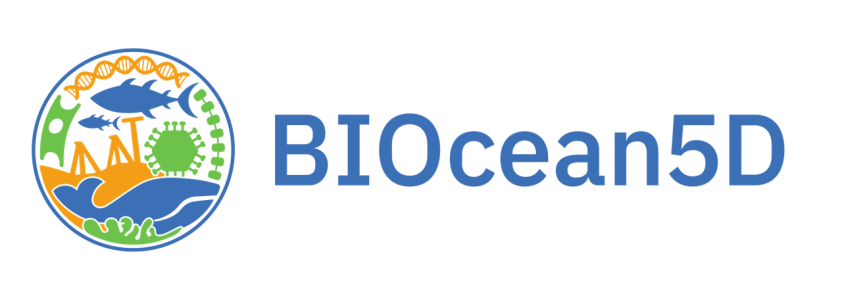
A European, multidisciplinary project exploring marine life and how it changes with space, time and human impact
Our Objectives
The ocean plays an integral role in supporting life on our planet.
Directly and indirectly, marine biodiversity contributes ecosystem services, known as natural capital, that are critical for planetary and human health.
But the richness and function of marine life is mostly unknown and the biodiversity we do know is changing at an exceptional rate – much faster than terrestrial life. This is due to global, local and human-induced stressors. Just 13% of the ocean remains unaffected by human activity. But thanks to recent technological advances, we’re now able to overcome some of the challenges associated with studying life beneath the waves. BIOcean5D represents a unique opportunity to harness these developments, to comprehensively understand the extraordinary richness of marine life.
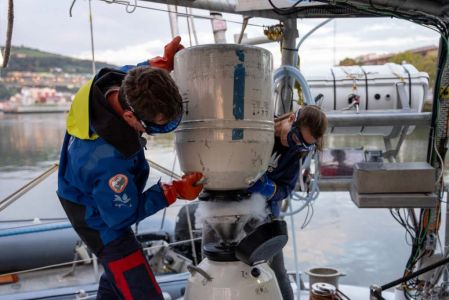
copyright Leslie Moquin /Fodation TARA Océan
Our approach
BIOcean5D is a powerful aggregator, bridging molecular to organismal biology, theoretical ecology and econometrics, and marine complex systems to social sciences.
We’re building an unprecedented set of samples, integrating existing samples and data with new sets collected from across the European coastline and data archives. And we’re using cutting-edge technologies, including eDNA/RNA sequencing, automated imaging, acoustics and remote sensing, massive computing power, artificial intelligence, and complex-system modelling.
Combined, this will give us a detailed picture of both taxonomic and functional marine biodiversity, and how they change across the 5 dimensions of space, time, and human impact.
As part of this project, SETE contributes its strong expertise in data analysis and mathematical modelling to advance our theoretical understanding of the functioning of ecosystems. Pauline Narvaez is investigating the effect of perturbations on the microbiome of sponges, and carries out field work in the Mediterranean to implement environmental genomics approaches.
Funding


Research Team :
Jose Montoya is the coordinator of WP4 and he works with researchers Alexandre Génin, Blai Vidiella and Pauline Narvaez
More informations on Biocean5D : https://biocean5d.org/

BIOSTASES
Introduction
BIOSTASES (BIOdiversity, STAbility and sustainability in Spatial Ecological and social-ecological Systems) proposes an ambitious innovative research program that aims to provide new perspectives on the functioning, stability, and sustainability of ecological and coupled social–ecological systems in the face of environmental changes.
By doing so, it will contribute to bridging the gaps between theoretical and empirical ecology and between ecology and social sciences, and to developing new approaches in biodiversity conservation, landscape management, and sustainable development.
Funding
This project is funded by the European Research Council under the European Union’s Horizon 2020 research and innovation program (grant agreement No 666971).

Objectives
The overarching goal of BIOSTASES is to develop a coherent body of new theory on the stability of ecosystems and coupled social–ecological systems and its relationships with biodiversity at multiple spatial scales that can inform empirical ecology, landscape management, and sustainable development.
BIOSTASES is organized around four complementary themes or work packages (WPs):
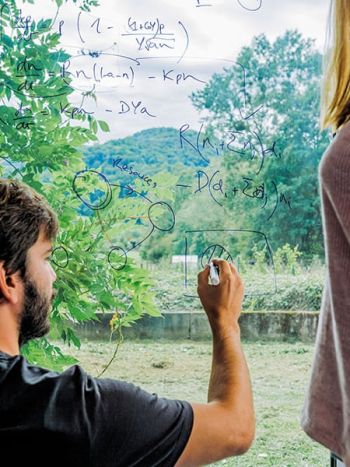
➔ WP1. Ecosystem stability and early warning signals for critical transitions
WP1 will establish the theoretical foundations for the whole project. It will revisit the main stability concepts and measures used in ecology so far, clarify their properties and connections, propose an integrative mathematical framework designed to predict temporal variability as an empirically relevant measure of stability, and use this framework to predict the conditions under which changes in temporal variability patterns can serve as early warning signals for critical transitions.
➔ WP2. Ecosystem stability and diversity–stability relationships at multiple spatial scales
WP2 will develop dynamical metacommunity models to explore a wide range of novel questions related to ecosystem stability and diversity–stability relationships at multiple spatial scales, in particular the effects of non-directional and directional dispersal on ecosystem stability, the emergence of scaling laws, and the effects of various anthropogenic environmental changes on ecosystem stability at multiple spatial scales. Model predictions will be tested against available empirical data from different ecosystems.
➔ WP3. Stability of ecosystem processes and services in complex meta-ecosystems
WP3 will develop new theory on the stability of complex meta-ecosystems with multiple trophic levels and on the stability and synchrony of multiple ecosystem services in heterogeneous landscapes to provide new perspectives on the stability of food webs and on synergies and trade-offs between multiple ecosystem services across space.
➔ WP4. Sustainability of coupled social–ecological systems
WP4 will develop novel theory that includes feedbacks of biodiversity and ecosystem services on human wellbeing to study the long-term dynamics of human–nature interactions and the sustainability of coupled social– ecological systems. In particular, it will explore the spatial dynamics of these systems, the role of human behavioural changes in averting their possible collapse, and possible early warning signals for impending collapses.




Leader
Michel Loreau is the PI on the BIOSTASES project, working with researchers Bart Haegeman, Claire de Mazancourt, Kevin Liautaud, Matthieu Barbier, Nuria Galiana Ibanez and Pierre Quévreux, supported by Dalila Booth as Project Manager.
FRAGCLIM
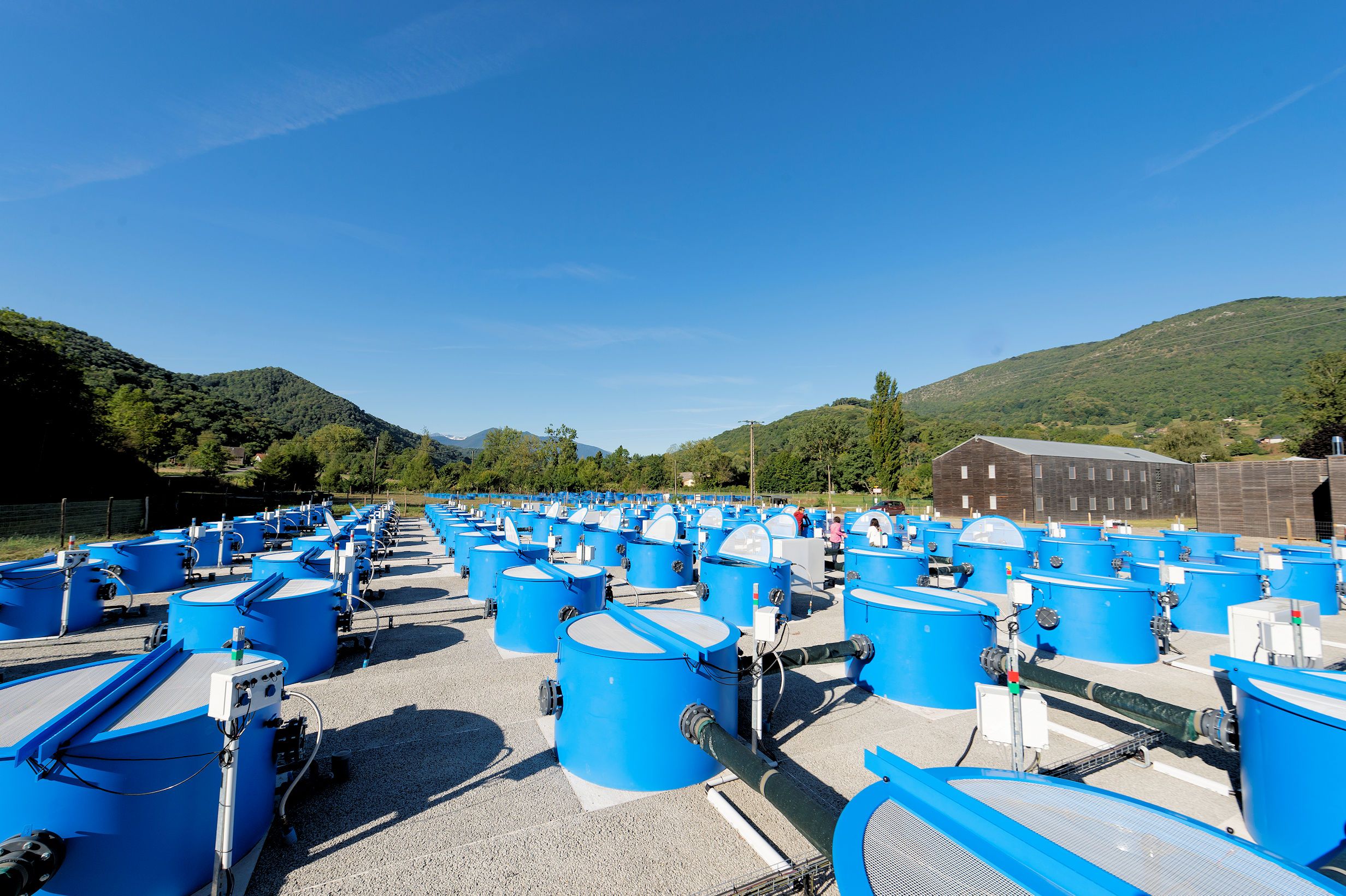
Introduction
Climatic warming and habitat fragmentation are the largest threats to biodiversity and ecosystems globally.
To forecast and mitigate their effects is the environmental challenge of our age.
Despite substantial progress on the ecological consequences of climatic warming and habitat fragmentation individually, there is a fundamental gap in our understanding and prediction of their combined effects.
Funding
This project is funded by the European Research Council under the European Union’s Horizon 2020 research and innovation program (grant agreement No 726176).

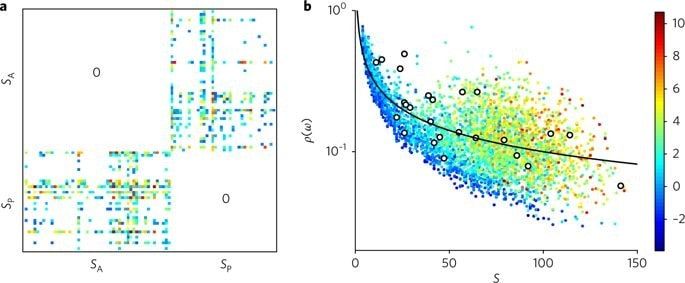
Objectives
The goal of FRAGCLIM is to determine the individual and combined effects of climatic warming and habitat fragmentation on biodiversity, community dynamics, and ecosystem functioning in complex multitrophic communities.
To achieve this, it uses an integrative approach that combines the development of new theory on metacommunities and temperature-dependent food web dynamics in close dialogue with a unique long-term aquatic mesocosm experiment.
It is articulated around five objectives. In the first three, FRAGCLIM will determine the effects of warming, fragmentation and warming and fragmentation combined, on numerous facets of biodiversity, community structure, food web dynamics, spatial and temporal stability, and key ecosystem functions. Then, it will investigate the extent of evolutionary thermal adaptation to warming and isolation due to fragmentation, and its consequences for biodiversity dynamics.
Finally, it will provide creative solutions to mitigate the combined effects of warming and fragmentation.
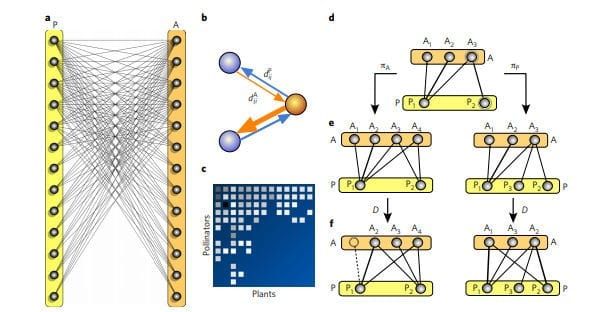
FRAGCLIM proposes an ambitious integrative and innovative research programme that will provide a much-needed new perspective on the ecological and evolutionary consequences of warming and fragmentation. It will greatly contribute to bridging the gaps between theoretical and empirical ecology, and between ecological and evolutionary responses to global change.
FRAGCLIM will foster links with environmental policy by providing new mitigation measures to climate change in fragmented systems that derive from our theoretical and empirical findings.
Leader
Jose Montoya is the PI on the FRAGCLIM project, working with researchers Alexios Synodinos, Bart Haegeman, Cara Faillace, Elvire Bestion, Simon Blanchet and Soraya Alvarez-Codesal, supported by Dalila Booth as Project Manager and Alexandre Garreau, Technician.
Several postdocs and PhD students will be recruited during the course of the project.
iBEF
Intraspecific diversity as a major component of Biodiversity-ecosystem functioning relationships
Introduction
Understanding the relationships between biodiversity and ecosystem functioning (BEFs) has major implications. Most BEFs studies have focused on mechanisms operating at the interspecific level, although biodiversity also comprises an intraspecific facet that could be important for ecosystem functioning.The main objectives of iBEF are to quantify the influence of intraspecific diversity on ecosystem functions, to unravel mechanisms linking intraspecific diversity to ecosystem multifunctionality and to integrate further intraspecific diversity into the BEF framework and into conservation policies.
iBEF focuses on ten species living in river ecosystems and interacting within a trophic network (from producers to secondary consumers).
The project combines observational and experimental approaches and is structured into four tasks, each fulfilling ambitious and novel objectives.
Funding
This project is funded by the Agence Nationale pour la Recherche and by the labex Tulip.Objectives
This project will generate novel results that should lead to a major rethinking of the BEF framework that would rest on an integrative view of the relationships between the environmental drivers, intra- and interspecific diversity, and ecosystem functions.
The iBEF project will also favour the general acceptance that intraspecific diversity should be preserved and managed efficiently, not only because it is the raw for evolution to occur, but also because its loss would significantly erode the way ecosystems function and the services they provide.
IBEF IS ORGANIZED AROUND THREE COMPLEMENTARY TASKS
➔ Determinate whether intraspecific diversity substantially contributes to ecosystem functioning in the wild.
Using observational data in the wild synthetizing local scale measures of intra- and interspecific richness and of environmental conditions, we will quantify the effects of intraspecific diversity on key ecological functions (primary productivity, secondary productivity and nutrient cycling). We will further test how much of the variability in ecosystem multifunctionality is due to direct effects of intraspecific diversity, to direct effects of environmental drivers, and to indirect effects of environmental drivers mediated by intraspecific diversity.
➔ Etablish the relative importance of intra- vs. interspecific diversity on ecosystem functioning, while controlling for other drivers.
We will use mesocosm experiments focusing on five of the ten species and varying simultaneously intra- and interspecific richness to test how much of the variability in ecosystem functioning is due to changes in each of these two facets of biodiversity.
➔ Determinate the relative importance of intraspecific diversity on ecological functions compared to the effect of climate warming.
We will use an experimental approach varying both intraspecific richness (in the same five species than in task 2) and water temperature to tease apart direct effects due to warming and intraspecific diversity, as well as indirect effects of warming mediated by intraspecific diversity on ecosystem multifunctionality.
➔ Dedicated to communicate our results to other scientists, but also to environmental managers as our project will inform on how much of ecosystem functions is loss when loosing intraspecific richness, and hence why it is important to conserve this facet of biodiversity.
Leader
Simon Blanchet is the PI on the iBEF project, working with researchers José Montoya, Julien Cucherousset, Mickaël Danger, Murielle Richard, Jérôme Prunier, Allan Raffard and Loïc Tudesque

ISOLAPOP
ISOLement Anthropique des POPulations
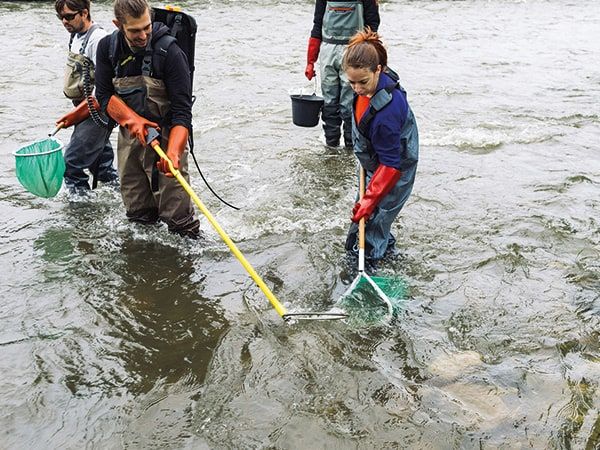
INTRODUCTION
Fish introduced in mountain environments in the 19th century are susceptible to act as a barrier in rivers that could induce population isolation of Pyrenean brook newt, an endemic amphibian. ISOLAPOP project aims to study this newts-fish interaction, at ecological and socio-economic levels, in order to propose a durable management plan.Funding
This project is funded by the Agence Nationale pour la Recherche.
Objectives
Introduced species, if they became invasive, could alter ecosystems functioning. Stocking in lakes and rivers is a common practice around the globe, giving fishermen sufficient number of fish. In the Pyrenean Mountains, various farmed fish species were introduced since the 19th century, first for tourists’ alimentation, then recently for recreational fishery. Those anthropic activities constitute a significant part of the local economy, without questioning potential impacts on biodiversity.Those introductions could have constrained patrimonial species populations, such as Pyrenean brook newt (Calotriton asper), by limiting the species presence in stocking zones (by predation, disturbance or competition) or by genetic isolation, increasing extinction risk. Isolation effect on biodiversity induced by human activities was poorly studied. Complex interactions between biological and socioeconomic systems (abiotic environnement – trophic resources – stocking – newts) in a common territory are the core of the ISOLAPOP project.
Based on collaborative multi-actors actions and on multi-scales interdisciplinary approaches (historical socio-economic and ecological analyses, experimental ecology, populations survey on the field and modelisation), the ISOLAPOP project aims to understand the effects of this anthropic isolation in order to integrate them in a model that could predict management plan efficiency on newts and fish populations in a context of climate change. The main objective is to propose durable management plans of a vulnerable territory, combining biodiversity conservation and piscicultural resource exploitation.
Leaders
Audrey Trochet, Hugo Le Chevalier, Marine Deluen, Olivier Calvez, Olivier Guillaume and Simon Blanchet are working on this project.
Follow ISOLAPOP on Facebook :https://www.facebook.com/projet.isolapop
EMPAT
Detection, distribution and impacts of an emerging parasite (Tetracapsuloides brysalmonae) in brow trout (Salmo trutta) populations
Funding
This project is funded by the Agence Française pour la Biodiversité.Leader
Simon Blanchet, Lisa Jacquin and Géraldine Loot are the co-PIs. Eloïse Duval is working on that project.
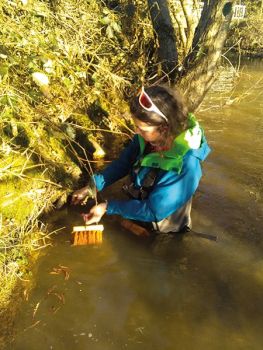
CONAQUAT
Biological connectivity in aquatic ecosystems: quantification, modelling and mitigation
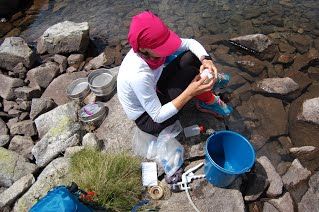
Funding
Région Occitanie and the Agence Française pour la Biodiversité.Leaders
Simon Blanchet is the PI. Jérôme Prunier, Delphine Legrand, Thomas Deruelles, Olivier Calvez, Michèle Huet, Sylvain Moulherat and Sylvain Pioch are working on the project.
TROUTCONNECT
Quantification of brown trout (Salmo trutta) movements in impacted rivers: the utility of molecular markers
Funding
This project is funded by the Electricité de France and the Agence Française pour la Biodiversité.Leaders
Simon Blanchet is the PI. Kéoni Saint-Pé, Julien Cucherousset and Géraldine Loot are working on the project.